Stepping into a wine shop can feel like entering a foreign country, with mysterious labels in unfamiliar languages beckoning from every shelf. But don’t worry, fellow wine enthusiasts! Learning how to read a wine label is your passport to navigating this delicious world with confidence.
In this article, we’ll uncork 15 expert tips that break down the essential components of a wine label, from producer names to grape varieties. By the time you’re done, you’ll be equipped to make informed and satisfying wine choices that’ll impress your friends and delight your palate.
Welcome to Didi Somm and the fascinating world of wine label literacy, Cheers!
Important Notice: The information in this article is for general and public information purposes only. It solely reflects Didi Somm’s or his Staff’s opinion, and no responsibility can be assumed for errors or omissions in the service’s contents. For details, please check the Disclaimer at the bottom of the homepage.
Key Takeaways
Key elements on a wine label include the producer name, wine region, grape variety, and vintage year, all crucial for assessing quality and style.
Understanding label terminology, such as appellation terms and technical terms, helps decode the wine’s origin and production, guiding better selection.
Front labels attract attention with branding, while back labels provide detailed tasting notes and pairings, making it essential to read both before buying.
Key Elements on Wine Labels
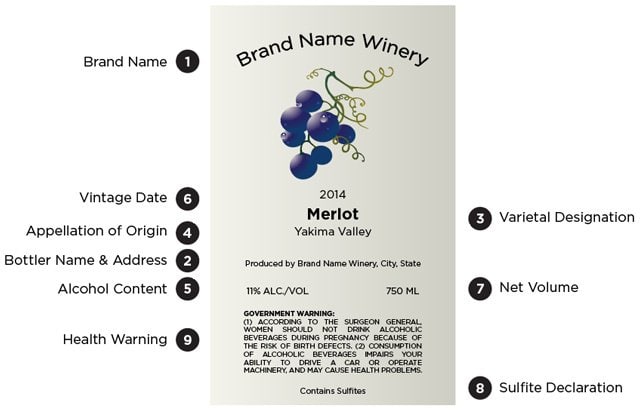
Wine labels are more than just decorative elements on a bottle; they are a treasure trove of information that can guide you in making an informed choice. The main components to look for on a wine label include the producer name, wine region, grape variety, and vintage year. Each element plays a crucial role in determining the wine’s quality, style, and taste. To make the most of this information, it’s essential to read a wine label carefully. Highest-quality wines often have a minimum ABV of 13.5%, which is a standard of excellence to look for on wine labels.
Grasping these elements helps in making well-informed wine choices and avoiding unexpected surprises. Non-vintage wines, which lack a vintage year on the label, are generally considered lower-value wines compared to their vintage counterparts.
Producer Name
The producer’s name on a wine label is a significant indicator of the wine’s quality. Reputable producers often have a history of awards and consistent quality in their wines. A well-known producer on the label usually indicates that the wine has been crafted with care and expertise. Established producers usually have solid reviews from critics and a loyal customer base, making them a reliable choice.
Wine Region
The wine region is another critical factor that can influence the flavor and style of the wine. Wines from specific regions are subject to strict regulations and quality control measures. For instance, Old World wines, like those from France and Italy, often describe their characteristics by regional style rather than grape variety. In contrast, New World wines, such as those from the United States and Australia, typically highlight the grape variety on the label.
Napa Valley is a renowned wine region known for its high-quality wines and strict regulations that protect its reputation.
Recognizing these regional differences assists in choosing wines that align with your taste preferences.
Grape Variety
Knowing the grape variety can provide significant clues about the wine’s taste and quality. Different grape varieties thrive in different climates, affecting the wine’s flavor profile. For example, Cabernet Sauvignon is known for its bold flavors and tannins, while Pinot Noir is celebrated for its delicate and complex taste.
Knowing different grape varieties helps you predict if a wine will match your palate.
Vintage Year
The vintage year, indicating when the grapes were harvested, is a key detail on wine labels. The quality of a particular vintage can vary depending on the weather conditions during the growing season. Some years produce exceptional wines, while others might be less favorable.
The vintage year offers clues about the wine’s potential quality and readiness to drink.
Understanding Label Terminology
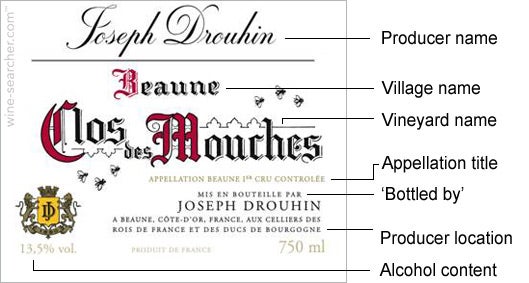
Wine labels often include a variety of terms that can be confusing to the uninitiated. Federal regulations dictate essential details that must be included on wine labels, such as the brand name, vintage, and wine type. Knowing these terms aids in deciphering what you are purchasing, ensuring the wine meets your expectations.
From appellation terms that indicate geographical origin to technical terms describing the winemaking process, each piece of information on the label serves a purpose.
Appellation Terms
Appellation terms are legally defined geographical indications that signify the origin of the grapes used in winemaking. In France, the term Appellation d’Origine Contrôlée (AOC) indicates wines produced in specific regions under strict regulations. Similarly, in Italy, Denominazione di Origine Controllata e Garantita (DOCG) represents the highest quality designation.
These terms ensure that the wine meets certain quality standards and maintains its authenticity.

Technical Terms
Wine labels often include technical terms that can provide insights into the wine’s production, including those that are wine labeled. For example, “Non-vintage” (NV) indicates a blend of grapes from different harvest years. Terms like “Organic” denote that the grapes were grown without synthetic chemicals.
Many wineries also provide information on the proportions of grape varieties in their wine blends, emphasizing transparency and consumer knowledge.
Recognizing these terms assists in selecting wines that match your preferences and values.
Sweetness Levels
Sweetness levels are an essential characteristic of wine, influencing its overall flavor profile and pairing options. German wine labels often use specific terms like “Trocken” (dry) and “Auslese” (sweet) to indicate the sweetness level. German wines, particularly Rieslings, offer a variety of high-quality dry wines, dispelling the common misconception that they are predominantly sweet. These terms guide you in choosing wines that fit your taste, whether dry or sweet.
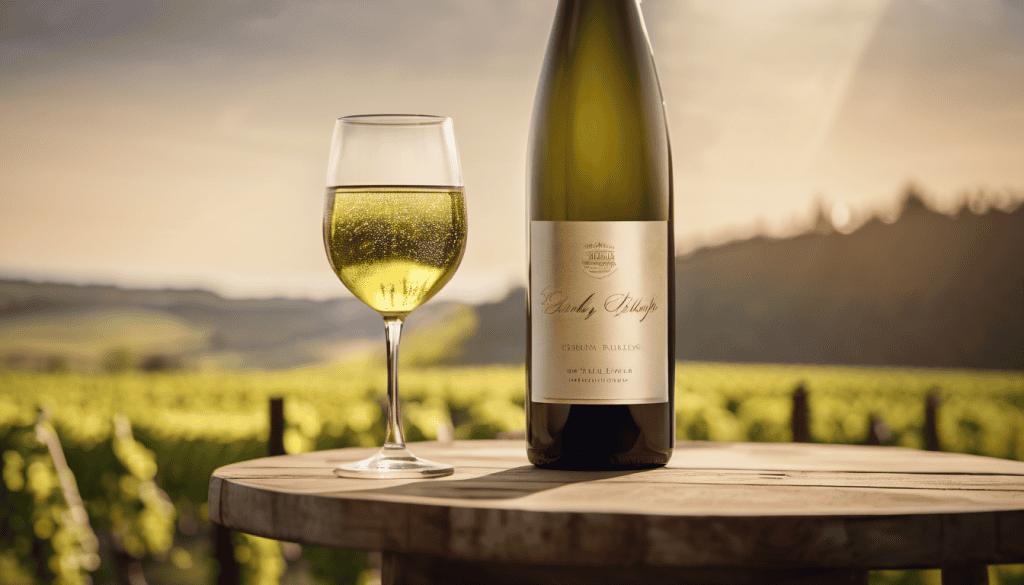
Front vs. Back Label
Wine labels are typically divided into front and back sections, each serving a distinct purpose. The front label is designed to attract attention with the brand name and eye-catching elements. In contrast, the back label provides more detailed information about the wine, such as tasting notes, recommended food pairings, and insights into the winemaking process.
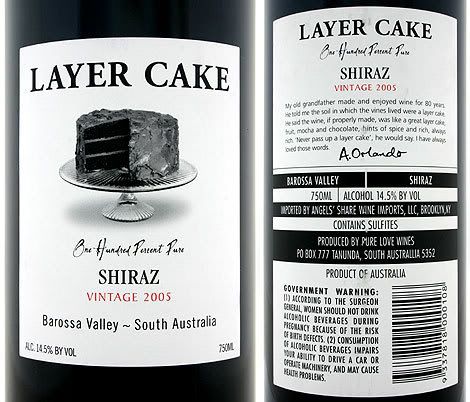
Knowing the distinction between these labels helps in gathering all the necessary information before buying.
Front Label
The front label of a wine bottle is primarily focused on marketing and branding. It often features the brand name prominently, along with eye-catching designs to draw consumer interest. This label is intended to create a visual appeal that can influence your decision when browsing through a wine shop.
Back Label
The back label, on the other hand, is where you’ll find detailed information about the wine. This includes tasting notes, food pairing suggestions, and insights into the winemaking methods used. The name of the wine producer is prominently displayed on labels, helping consumers identify the source and quality of the wine. The back label can provide valuable clues about the wine’s flavor profile and how it might complement your meal.
Special Designations
Special designations on wine labels can indicate unique qualities of the wine, such as its sweetness or the specific vineyard from which the grapes were sourced. These designations often signify higher quality and adherence to specific production standards.
Table wines are generally everyday drinking wines. While sweet table wines are rare, they can be found and are often labeled as such.
Knowing these designations helps in picking wines that match your quality and taste expectations.
Estate Bottled
“Estate Bottled” is a designation that indicates the wine is made from grapes grown, harvested, and bottled on the same property. This means the winery controls the entire production process, ensuring consistency and quality.
Wines with this label are often considered to be of higher quality due to the meticulous attention to detail in their production, especially when it comes to a particular wine.
Vineyard Designation
A vineyard designation on a wine label signifies that a high percentage of the grapes come from a specific vineyard. This often indicates higher quality, as the vineyard’s unique conditions can significantly influence the wine’s characteristics.
Wines with a vineyard designation are typically more expensive and sought after by connoisseurs.
Reserve and Special Selections
Terms like “Reserve” and “Special Selections” often denote wines of exceptional quality. In regions like France and Italy, terms like Grand Cru and Premier Cru indicate top-tier wines. Understanding these terms can greatly influence your wine selection process, helping you choose wines that offer superior taste and quality.
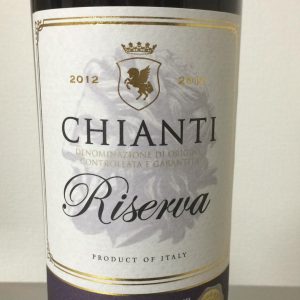
Alcohol Content and Sulfites
Alcohol content and sulfite declarations are crucial pieces of information on wine labels. The alcohol content indicates the wine’s strength and can influence its body and flavor profile. Sulfite declarations are important for individuals with allergies, as sulfites can trigger adverse reactions.
Reading these details helps in choosing wines that meet your preferences and dietary needs.
Alcohol Content
The alcohol content statement on a wine label indicates the percentage of alcohol by volume (ABV). Red wines typically have a higher ABV than white wines, offering a fuller body and robust flavor.
Knowing the alcohol content assists in selecting wines that fit your taste and pairing needs.
Sulfite Declaration
Wines containing more than 10 mg/liter of sulfur dioxide must disclose this information on their labels. This declaration is particularly important for consumers with sulfite allergies. While producers are not required to specify the exact amount of sulfites used, the presence of this information can help you make informed choices.
What’s Not on the Label
While wine labels provide a wealth of information, there are also critical details that are often omitted. These can include the use of fining agents, specific farming methods, and additives used during fermentation. Knowing what’s omitted from the label is as crucial as what’s included, aiding in making informed wine choices.
Fining Agents
Fining agents are substances added to wine to clarify and stabilize it by removing unwanted particles. Common fining agents include egg whites, bentonite clay, and isinglass.
However, wines often do not disclose the use of these agents on their labels, leaving consumers unaware of their presence.
Farming Methods
Information regarding whether wines are produced using organic or sustainable farming practices is often not disclosed on labels. Many consumers are interested in knowing these details as they can significantly influence the perceived quality and environmental impact of the wine.
Knowing the grape cultivation methods can significantly influence your wine choice.
Additives and Fermentation Details
Wine labels frequently do not provide insights into the specific additives or fermentation processes used. These details can significantly affect the wine’s flavor and quality, making it important for consumers to seek out additional information when possible.
Tips for Selecting Quality Wines

Selecting quality wines can be daunting, but understanding wine labels can make the process easier. Look for reputable producers, understand regional specialties, and check for awards and ratings.
These factors can help you identify wines that offer superior taste and quality.
Recognizing Reputable Producers
Recognizing reputable producers is crucial for choosing high-quality wines. A producer’s name on a wine label usually signifies a commitment to quality and consistency.
Special designations like vineyard designation and “reserve” can also indicate higher quality.
Understanding Regional Specialties
The geographic origin of wine significantly influences its flavor and style. Different grape varieties thrive in a particular region, making it important to understand regional specialties when selecting wines.
Appellation terms and vineyard designations often signify premium quality.
Checking for Awards and Ratings
Awards and ratings from reputable competitions can serve as indicators of a wine’s quality. Referencing expert ratings from established wine critics and publications can enhance the credibility of a wine’s quality.
Knowing the context and criteria behind awards aids in making more informed wine choices.
FAQ – “how to Read a Wine Label”
How does the producer name on a wine label affect the quality of the wine?
The producer name on a wine label often signals the winery’s reputation and quality track record. Established names typically deliver more consistent and well-reviewed wines, so keeping an eye on the producer can definitely guide your choices.
Why is the wine region important on a wine label?
The wine region is crucial on a label because it directly affects the wine’s flavor and style through unique climate and soil conditions. Plus, many regions have regulations that guarantee quality and authenticity, making it important for your wine choice.
What does the term “Estate Bottled” mean on a wine label?
Estate-bottled wine comes from grapes grown, harvested, and bottled on the same property, ensuring the winery has control over the entire production process. It’s a mark of quality that highlights the winery’s commitment to craftsmanship.
How can I determine the sweetness level of a wine from its label?
To determine a wine’s sweetness level, look for terms like “Trocken” for dry and “Auslese” for sweet on the label. This will guide you in selecting a wine that perfectly matches your taste.
Are there any important details that might not be included on a wine label?
Absolutely! Wine labels usually don’t disclose details like fining agents, farming methods, or fermentation additives, which can really affect your choice. Knowing this can help you find a wine that aligns with your preferences.
Conclusion
Decoding wine labels can seem daunting, but with a bit of knowledge and practice, it becomes much easier. By understanding key elements such as the producer name, wine region, grape variety, and vintage year, you can make more informed decisions about the wines you choose. Familiarizing yourself with common terminology and special designations can further enhance your ability to select high-quality wines.
Remember, not all important details are always included on the label, so being aware of what might be missing can also be crucial. Armed with these tips, you can approach your next wine-shopping experience with confidence and a deeper appreciation for the complexities of wine.
Enjoy, and Cheers!
For your reference, the latest articles by Didi Somm include:
- What Does Wine Taste Like? – Find Out Here
- Expert Talk: Wine Bottle Sizes – All You Should Know
- What is a Sweet Wine? – 7 Expert Insights
- How to Use Dry White Wine for Cooking? – Your Best Guide
- How to Build a Wine Cellar: 10 Expert Steps to Create Your Perfect Vino Haven
- Sip Smart: The Ultimate Guide to Low Alcohol Wine
Important Notice: The information in this article is for general and public information purposes only. It solely reflects Didi Somm’s or his Staff’s opinion, and no responsibility can be assumed for errors or omissions in the service’s contents. For details, please check the Disclaimer at the bottom of the homepage.


